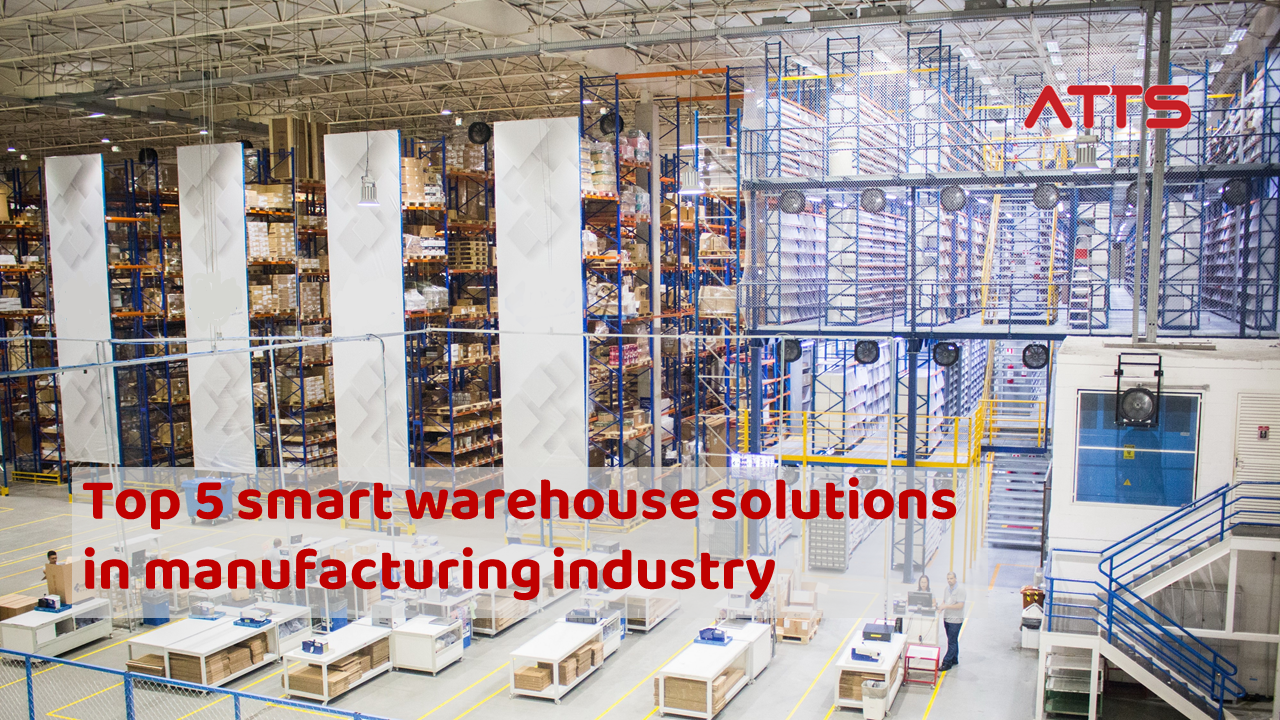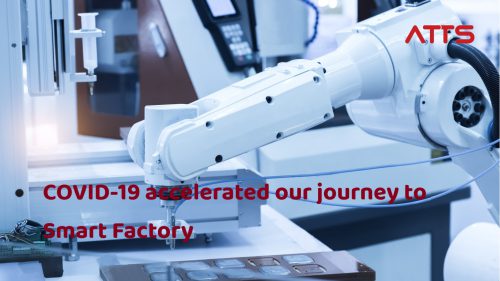Top 5 smart warehouse solutions in manufacturing industry
Technology in all sectors of the economy is advancing at an unprecedented rate. To keep up with the development of the manufacturing industry and market demands, warehouses also need to be equipped with modern technologies. This has formed a new concept called smart warehouse model.

The current optimal warehouse improvement solution is smart warehouse.
What is a Smart Warehouse?
The outbreak of the COVID-19 pandemic and the rapid growth of the e-commerce industry has put enormous pressure on supply chains and warehousing operations. The current optimal warehouse improvement solution is smart warehouse.
Smart warehouses are currently considered the highest level of warehouse automation. Similar to a smart home, a smart warehouse is enabled with several automated and interconnected technologies. These technologies interact with each other to increase warehouse productivity and efficiency, reducing labor costs and errors. A smart warehouse system is a technology ecosystem where goods are received, counted, classified, and distributed automatically. The more modern smart warehouse solutions, the higher the automation rate.
Read more: Smart factory: A trend in Industry 4.0
The advantages of smart warehouse

Smart warehouse technologies bring about many benefits.
Reduce labor cost & risk of accidents
Labor costs generally account for nearly two-thirds of warehouse operating costs. Smart warehouses reduce the need for human labor and optimize performance, contributing to lower operating costs. This will reduce the prices of goods and services provided to consumers, giving businesses a competitive advantage.
Normally, a large number of employees are required to operate the warehouse; but with the smart warehouse model, only one warehouseman is needed to manage the storage, shipment, inventory, all on one single software. Smart warehouse makes the management process faster and more accurate, reducing the number of employees, thereby reducing the risks of industrial accidents.
Reduce time & errors
Shipping time is an important factor affecting consumer decisions in the era of e-commerce and online shopping. Fast shipping and order processing is a valuable competitive advantage. In a traditional warehouse, order processing takes longer time because of selecting products and filling orders. In addition, human labor errors also cause delays in the processing, sorting, and packaging of orders.
The management of products by barcode and IP address makes it easier to identify and determine the exact location of the products. Just enter the IP address of a specific product, the system will automatically take and perform the shipment of goods with the help of delivery robot systems, automatic conveyors, cranes, etc. The smart warehouse can bring the selection error rate to near zero and save more time because the warehouseman does not need to move to find the right item to deliver.
Saving warehouse floor space
A smart warehouse with an automatic picking and sorting solution allows for higher shelving design and narrower aisles and an increased volume of goods that can be stored compared to traditional warehouses in the same space. Instead of using a rowing ladder to store or take products, smart warehouses allow users to take advantage of the height of the factory (maximum height over 3m), saving floor space and space up to 70%.
Optimal with analytics and prediction
Smart warehouse solutions, such as advanced data analytics, continuously update data, monitor, and provide data-driven solution recommendations for improvement. The application of artificial intelligence to supply chain planning and order analysis can help estimate future orders. This predictability can be used to optimize warehouse operations and plan for changing market demand scenarios.
Top 5 smart warehouse solutions
Modern technology integrated robots
Warehouse robots that we often see today mainly handle the picking and packing of goods. With ever-evolving technology, modern robots in the smart warehouse model will be equipped with more advanced features. In the future, robots can be equipped with the shortest route analysis to reach goods, voice recognition, and control, virtual reality technology, etc.

Robots in the future
Warehouse Management System
Warehouse management system is a platform that helps manufacturing enterprises have a complete view of the production process, real-time statistics, and accurate planning. A smart warehouse has many uses, from data collection to warehousing management, allowing for day-to-day performance tracking and improvement. Since most management solutions can collect real-time data and make visual reports, they help detect errors in time for quick troubleshooting. In addition, cloud-based warehouse software allows employees to easily and securely access information even off-site, ensuring information is captured when needed.
Artificial Intelligence (AI)
The use of artificial intelligence (AI) is exploding in every industry, and the warehousing environment is no exception. For example, AI helps a robot determine the best box type and most economical packing method for a shipment based on the product type, quantity, size, shape, and weight.
Automated inventory control platform
Most companies today still do inventory manually, and the inventory data are not fully digitalized. When implementing an inventory control platform with the use of asset tags, goods are automatically inventoried, data is quickly collected for accurate, real-time reporting, and remote access.
Internet of Things (IoT)
IoT (Internet of Things) involves communication between Internet-enabled devices to interact and share data. This means that robots can communicate with all technologies, including the warehouse management system. IoT can help reduce risk and avoid errors or losses in the supply chain with prediction and early detection based on data collected from sensors (temperature, humidity, and other conditions), vehicles, machines, and products, etc.
IoT systems sync all data in one platform, optimize inventory control, production planning, and improve customer experience. This all happens automatically and seamlessly, without missing any important information. Without IoT technology, humans would have to complete the process manually, which for such a huge amount of information, the possibility of errors is very high. But thanks to IoT, this process is accelerated and errors are greatly reduced.
Since 2021, ATTS Vietnam (Autotech) has refocused. Besides automation services for robots and PLCs, we also design customized 4.0 solutions for manufacturing enterprises, including smart factory, smart warehouse management, MES, etc. To grasp the latest trends as well as have the best solution for your business, don’t hesitate to contact us.
Read more about ATTS services:
https://atts.com.vn/services.html
Connect us:




